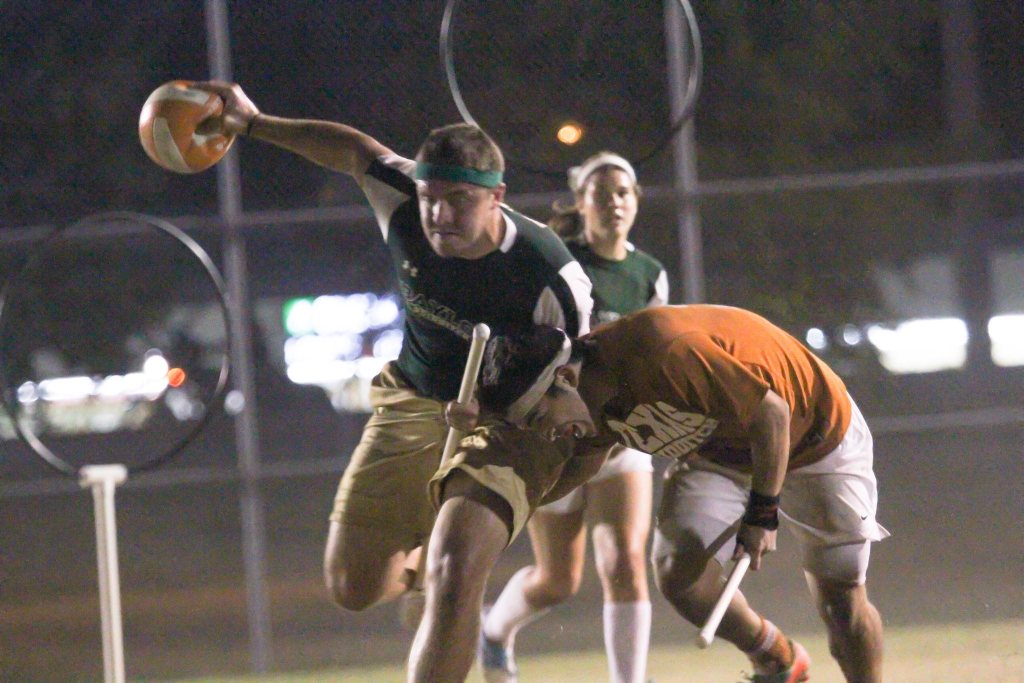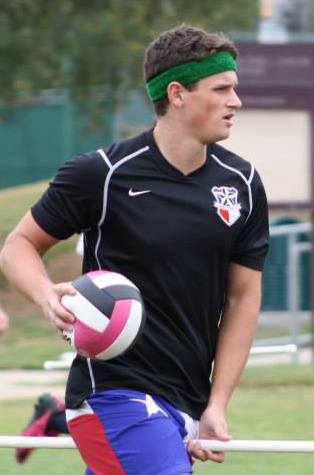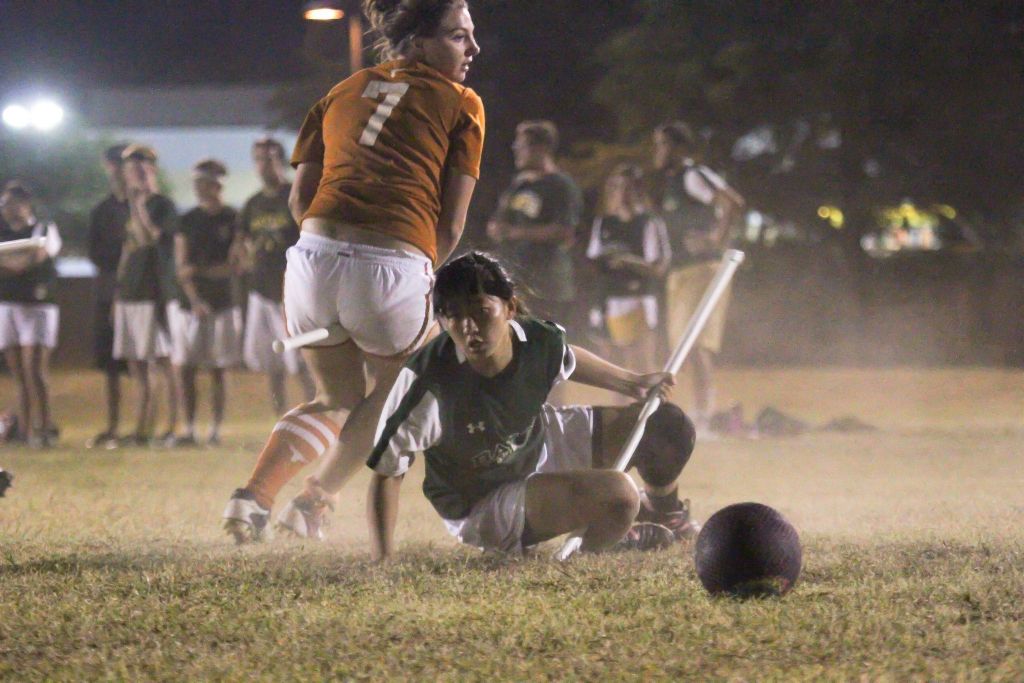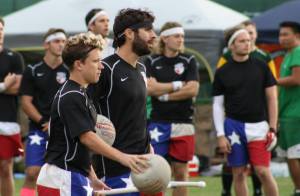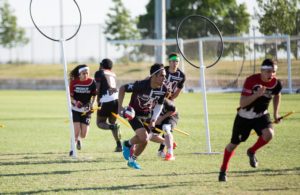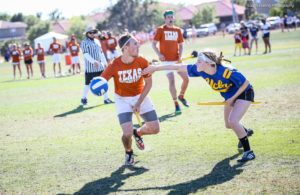- Rule, Britannia, no more?
- Unpopular Opinions: US Quadball Cup 2023
- Proven Contenders: University of Virginia
- Proven Contenders: Rutgers University
- Proven Contenders: University of Michigan
- Proven Contenders: Creighton University
- Different Perspectives: A Look Inside USA Ultimate
- Antwerp QC, Much of Belgian Core, Leaves Competitive Quidditch
Wolf Pack Classic Recapped by the Numbers
- Updated: November 13, 2014
The Third Annual Wolf Pack Classic was the first tournament in the Southwest this season. Perhaps it did not feel that way; maybe it was not truly the first tournament to be held in the Southwest, but, for all intents and purposes, it was. Diamond Cup lacked No. 2 University of Texas and then-ranked No. 5 Texas A&M University. Breakfast Taco was unofficial. And perhaps more importantly, there was no competitive footage released from either tournament. Texas’ perfect passing at Breakfast Taco was forgotten, nothing more than a memory for the few people who actually attended that semifinal. Texas State University’s handling of the Baylor University zone and epic comeback against Lone Star Quidditch Club was likewise lost to the public when those that filmed the games decided to utilize the film for personal use. Wolf Pack was different. The plethora of film currently available makes it possible now more than ever before to accurately rank the top teams of the Southwest.
Pool Play
Pool play is often a dull matter. In the Southwest, where the Big Four exist on a tier above every other team, pool play is often a boring exercise of the top team in each pool winning every single game by a ridiculous margin. That was what made this year’s Wolf Pack Classic so interesting. Using a unique approach where teams were placed in pools in order of ranking, Wolf Pack Classic featured exciting rematches from World Cup VI–Texas vs. Texas A&M and Texas State vs. University of Miami. In both instances, the same team won; in both instances, by a wider margin.
Texas A&M lost their most talented players when Lone Star poached away Sean Fry from their beating line and obtained Becca Dupont, Drew Wasikowski and Kifer Gregoire from their chasing line. A&M replaced them with a very physical lineup, determined to not let the drawback impair their success.
Unfortunately, A&M’s physicality was their biggest downfall. They drew more cards than scores in the game, losing 130-80* with 10 cards. Nevertheless, A&M stayed strong in their remaining two matchups and came into bracket play determined to win any possible rematch.
Miami had a different set of games. After breezing past Austin Quidditch 160*-50, the Canes sputtered in both of their remaining pool play games. Against Loyola University New Orleans, they failed to use bludger control effectively on defense. Once Loyola obtained bludger control, they used it to completely guard the snitch. The Canes were able to take advantage of the absence of bludgers in the quaffle game to gain a 70-50 lead against Loyola, but were unable to score again until Loyola’s seeker caught the snitch to win 80*-70.
If Miami could not even keep Loyola under control, it would be impossible for them to deal with Texas State. And, as expected, after taking a few injuries, Miami went for the suicidal snitch grab for a 110-70* loss.
Bracket Play
Possibly the best aspect of bracket play at Wolf Pack was the fact that every important game was recorded on video, facilitating an in-depth statistical analysis of each of the teams.
Texas State 210*-60 Texas A&M
This game proved to the world that A&M existed an entire tier below Texas State and Baylor. Once again, A&M scored fewer goals than they received cards. But perhaps more shocking is the complete domination by Texas State in every aspect of the game.
Texas State had bludger control of the quaffle game for 81.9% of drives. A&M gave up six drives to Texas State when they had no bludger. Texas State conceivably scored on every one. These two tell a story of their own. As mentioned previously, A&M lost Fry, arguably their most fearsome male beater, to Lone Star. Another veteran, Austin Potts, quickly received a red card in every game against a top-tier opponent he was in against. The more Texas State held on to bludger control, the more desperate and aggressive A&M grew, resulting in drives with zero bludgers.
But the story does not stop there. A&M was abysmal in breaking down the Texas State defense, scoring two out of 11 attempts (18.2%) against one bludger and three out of 24 attempts against two bludgers (12.5%). Texas State had no problem plowing through A&M’s inexperienced chaser lineup. The Bobcats easily threw off their inexperienced Aggie defenders, who had trouble adjusting to the series of picks and reverses that Texas State used so often. Texas State scored 12 out of 29 attempts (41.4%) against a one-bludger, Aggie defense. This is not a small difference. This is a point differential that was impossible to find last year in a matchup between the Southwest top five. A&M proved that they belonged a tier lower than the rest of the Southwest top four.
Texas 120*-60 Baylor
Maybe this game could have gone differently had the snitch lasted more than 15 seconds. It is entirely conceivable that Texas’ snitch game would have doomed them against Baylor’s bludger control. It is entirely likely that Baylor could have scored on the drive they were on and caught the snitch instantly afterward to win. But no matter how many hypotheticals you consider, the statistics do not lie. This Texas team is better than the Baylor team they faced.
One of the Longhorns’ biggest weaknesses last season was their inability to break down the Baylor zone. Texas had a record of 1-4 against Baylor in the seasons that they eventually won the World Cup. This has always been due to a complete failure against a two-bludger Baylor defense.
Baylor’s zone is a feedback loop. Bludger control ensures the effectiveness of the zone and the zone ensures that bludger control is kept. The zone forces offenses to be more aggressive with their bludgers, resulting in many drives against zero bludgers for the Baylor offense. As such, any team going up against Baylor needs to learn how to do two things. The first is to be able to hold bludger control against Baylor. The second is to be able to score against a two-bludger, Baylor defense.
Texas put on a spectacular show of their ability to break down the Baylor zone with the incredibly accurate passing and coordination they used against Lone Star at Breakfast Taco. Their passing forced Baylor’s beaters to make a hard decision–focus on Texas’s beaters and risk getting scored on or focus on Texas’s chasers and risk giving over bludger control.
The results were truly impressive. Texas scored on four out of 13 attempts (30.8%) against two bludgers. Most highly-successful teams can barely score at a rate of 20% against two bludgers, and Texas put up a statistic of 30.8% against the Baylor zone.
That statistic alone may have explained Texas’s victory. But there was one even more impressive statistic for the matchup. Using a similar display of sharp passing, relentless driving and the 1.5 bludger offense, Texas scored on four out of six attempts (66.7%) against a one-bludger, Baylor defense. Yes, 66.7%. Even against mismatched teams, it is extremely difficult for an offense to score higher than 50% against a one-bludger defense. Texas State, facing an A&M team that could hardly be called competition, did not show this much effectiveness against a one-bludger defense.
The offensive statistics may explain how Texas was able to beat a Baylor team that kept control on 70% of drives. Texas’ defense showed why Texas is able to consistently keep in snitch range with Lone Star. Even when they only had one bludger on 12 drives, the Longhorns only let in three goals (25%). And on those rare five drives when Texas had bludger control on defense, the Longhorns let in a score only once (20%).
The result is that, for a second time in a row, No. 2 Texas has shown that it has what it takes to consistently outperform Baylor.
Lone Star QC 120-50* Texas State
It must have been strange, to see a team that humiliated Texas A&M get humiliated in turn in their very next game. But that is exactly what happened in this semifinal matchup. Texas State can hardly point to a specific point in their failure. Both teams had exactly the same opportunities–50% bludger control, one drive against zero bludgers, 11 drives against one bludger and 14 drives against two bludgers.
The difference was that Texas’ State’s offense completely broke down no matter how many bludgers they were facing. One bludger? One for 11 (9.1%). Two bludgers? One for 14 (7.1%). No bludgers? Even their sole drive against zero bludgers resulted in a turnover.
Texas State’s clever play at the line of point utilizing reverses, picks and fake handoffs could not fool a team of experienced veterans who have seen it all. Texas State’s off-ball play was shut down entirely by elite defenders who never allowed any Bobcat chaser to get open. And to top it all off, Texas State never engaged a one-bludger, Lone Star beater. Even during the 19-drive stretch where Texas State managed to continually keep bludger control, Lone Star beater Mollie Lensing was left completely unchallenged when her team was on defense, allowing her to dominate the center field. Their sole goal against one beater came off a missed beat.
To put it simply, Texas State proved that it completely lacked both the coordination and the strategy to outplay Lone Star. On offense, even when chasers were able to get open, Texas State could not complete the pass due both to excellent wing defense by Lone Star and horrible spacing by Texas State. On defense, Lone Star simply charged down the middle using their beaters to occupy Texas State’s beaters. This allowed Lone Star’s chasers deeper into Texas State territory, forcing the keeper to shift his attention forward, leaving chasers Sarah Holub or DuPont open for a clean pass behind the hoops.
The result was that Lone Star scored five times against both a one-bludger, Texas State defense (45.5%) and a two-bludger, Texas State defense (35.7%). After five or so goals, Texas State was so exhausted that they ceased to play their standard defense and instead opted for a bastardized version of a hoop defense, drawing Team USA chaser Eric Reyes back onto the keeper-zone line and sending a lone female chaser to play wing defense.
I cannot begin to explain how horrible of a strategic decision that was. The female chasers were not even close to the same level that Lone Star’s chasers were at. Texas State might have as well taken their female chaser back to the hoops as well, because Lone Star was able to get open just as easily. Lone Star chasers Kody Marshall, Simon Arends and Josh Tates were able to consistently find the ball and either drive or pass to an unguarded female chaser behind the hoops for an easy score.
Texas State proved in this game that they were not on the same level as Lone Star, and they deserved the No. 4 ranking behind Baylor, Texas and the Southwest community team.
Lone Star 130*-70 Texas
I remember the last two times these teams played in an official tournament. Lone Star won both games handily, 110*-20 and 80*-30. Lone Star was also clearly the better team in both games. Nevertheless, it would be a mistake to trivialize this game to something as simple as the box score. The 33 minutes of this match featured the highest level of play quidditch has ever seen.
Quaffle Game
Even last season, Lone Star boasted an impressive roster. Their failure to win World Cup was given as an example of the result of a lack of coordination and the weaknesses of an “all-star team.” One of Lone Star’s biggest weaknesses last season is that they were unable to do much with bludger control. Their rate of success against one bludger was only marginally better than their rate of success against two. Clearly, this was due to a lack of coordination and a preference for the “one-pass, hero-balling” style that was common within the team last year. I remember how inconsistent Lone Star seemed to be against A&M. Any match in which their quaffle game and coordination were on point, their beating game slacked. Whenever their beating game showed improvement, their coordination fell apart.
This year, Lone Star strived to do better. Their coordination is still not perfect, especially when faced with an elite defense like that of Texas; however, Lone Star has improved a huge amount since their performance at Breakfast Taco and will only improve with continued practice time. The results showed here. Due to excellent coordination and very clever use of the 1.5 bludger strategy, Lone Star scored on four out of nine attempts (44.4%) against a one-bludger, Texas defense.
However, while Lone Star’s success against a one-bludger defense was fantastic, they were brought down to Earth by Texas’ extremely stout two-bludger defense, scoring only twice on 11 attempts (18.2%). More impressive was Lone Star’s extremely good defense against Texas’ 1.5 strategy. This resulted in the Longhorns having only moderate success against one bludger: going three for 14 (21.4%) as compared to two for nine (22.2%) against two bludgers.
Bludger and Snitch Game
Whenever someone mentions Colin Capello, Lauren Carter, Jacob Adlis and Hope Machala, we all think of the elite World Cup VI Texas beating squad that was the foundation for the domination of Texas that year. Yet, I remember a time around the Southwest Regional Championship where this beating squad was often criticized, after another loss to Baylor, as being weak. I remember analyst after analyst talking about a hypothetical Texas-UCLA matchup, saying that Texas had the better chasers, but relatively weak beaters. I agreed with them. I remember commenting throughout the World Cup VII season that Texas was smarting from the loss of their elite beating corps. Every analyst at the time agreed. Texas’ beaters were their downfall. And yet, I remember looking at the stats of the Texas vs. Texas A&M game at World Cup VII with growing disbelief as the numbers confirmed what I was seeing on screen: 85% bludger control.
Texas has always gone in the same direction as their beaters. It is no surprise that Texas’s ability to keep bludger control helps them win most games. In this game, Texas kept bludger control on 54.2% of drives. Texas’ bludger control allowed them to be up 70-50 when the snitch returned to the pitch.
Patterns often repeat in the Southwest. Last season, Texas A&M beat Lone Star five times in roughly the exact same way. Texas’ slow improvement in their spring games against Baylor last season mirrored their slow improvement in their fall games against Lone Star. And so I was not surprised at all when the same pattern I had seen at Breakfast Taco repeated itself. At 18 real-time minutes into the game, Texas beater Freddy Salinas tackled Lone Star beater Savannah Allison from behind, earning him a yellow card and turning over bludger control, just as Texas beater Kiki Crawford’s foul on Allison in the Breakfast Taco matchup turned over bludger control at roughly the same time. Soon after the foul, the snitch returned to the pitch. I watched as, once again, Lone Star hunkered down on their bludgers as Texas seekers Kenny Chilton and Aryan Ghoddossy failed to catch the snitch against bludger control. I watched as Lone Star scored multiple times against the no-bludger, Texas defense to pull ahead, much like how Lone Star cut a 50-point deficit at Breakfast Taco to 20 against a no-bludger, Texas defense. And I watched as, once more, Lone Star pulled the snitch for their rightful victory.
Lone Star was the better team. But this team is not yet at the level that A&M was at last year. Lone Star still shows signs of weakness, like the 18.2% success rate against two bludgers or the fact that four of their goals came from drives against zero bludgers. Texas will have a chance to beat Lone Star on home turf during this weekend’s Lone Star Cup, but, as of now, the ranking of teams in the Southwest is more firmly defined than ever:
No. 1 – Lone Star Quidditch Club
No. 2 – University of Texas
No. 3 – Baylor University
No. 4 – Texas State University

